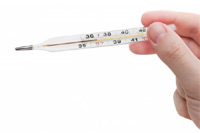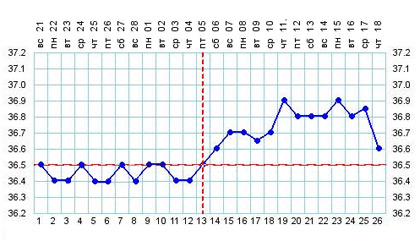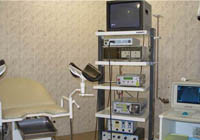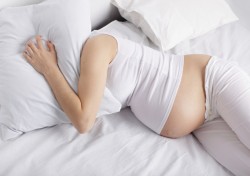Basal temperature - this temperature measured in the rectum of women. Temperature fluctuations in the pelvis cavity are associated with processes occurring in the internal genital organs of a woman against the background of changing the concentration of sex hormones.
Content
Basal temperature – This temperature measured in the rectum of women. Temperature fluctuations in the pelvis cavity are associated with processes occurring in the internal genital organs of a woman against the background of changing the concentration of sex hormones. Under the action of estrogen and progesterone, the blood supply of the pelvis organs and, as a result – The temperature in the rectum. Temperature fluctuations are exclusively local and cannot be determined by measuring in the mouth, in the axillary depression or the groove region. In addition to hormonal background, the temperature indicators have a significant impact of all processes accompanied by a change in blood flow in pelvic organs, for example, inflammation or disease of the vessels. The overall increase in body temperature in various diseases, overheating also contributes its own adjustments, and the measurement results of the basal temperature lose their authenticity.
For which measure basal temperature?

First, in order to understand the body to understand how the ovaries are working as far as. During the menstrual cycle, the concentration of estrogen and progesterone changes, which is reflected in the change in basal temperature. So, tracing temperature fluctuations can be seen how properly the menstrual cycle of women is organized, evaluate the sequence and duration of its phases.
Secondly, measuring basal temperature, it is possible to determine the time of the ripening of the egg and the time of ovulation. This allows, on the one hand, calculate «Dangerous» days from the point of view of undesirable pregnancy, and on the other hand, determine «Favorable» Days for conception when planning pregnancy.
Thirdly, measuring basal temperature, it is possible to install whether pregnancy or delay of menstruation has been due to disruption of the ovaries (ovarian dysfunction).
Fourth, based on the results of basal thermometry, one can assume the presence of an inflammatory process in the pelvic organs – rectum, uterus, appendages and pelvic fiber.
Basal temperature measurement rules
To obtain the most correct results, measurement of basal temperature requires compliance with certain rules.
- To measure basal temperatures, it is recommended to use the usual medical thermometer. And, during one menstrual cycle, it is advisable to use the same thermometer to be stored in close proximity to bed.
- Measurements must be made at the same time of the day, it is better in the morning when the hormonal saturation of the body is maximum.
- In order for the temperature indicators to maximally reflect the changes in the hormonal background, the study should be conducted immediately after sleep, without getting out of bed when metabolic processes are at the main level, and there are no changes in the body heat exchange.
- Measurements should be kept lying on the left side, because in the position on the right side, the blood circulation of the rectum will be intensified by the inflow of blood from the overlying intestinal departments.
- The thermometer is introduced into the rear passage to a depth of about 2-3 cm and left for 5-7 minutes. During the procedure, you should keep calm, do not move, do not talk, do not show other activities.
- After removing the thermometer, the data obtained is written to the table.
How to record the measurement results of basal temperature?
The measurement results of basal temperature must be recorded in the notebook in the form of a table having the following form:
| Day of the month | February, 15 | February 16 |
| Day of menstrual cycle | one | 2 |
| Basal temperature | 36.8 | 36.7 |
| Special marks: pain, discharge, increase in total temperature, diarrhea, runny nose, sexual intercourse, late waste, alcohol, and t.D. | Moderate bleeding | Abundant bloody discharge, pain at the bottom of the abdomen, late waste. |
Why follows so scrupulously to keep the table of measurements of basal temperature? Because this form of recording results of the study will help the doctor to quickly understand the current situation, for example, to identify the violation of the ovarian function, to determine the form of violation, to establish a possible reason for infertility.
After the end of one menstrual cycle, based on the data of the basal thermometry listed in the table, a graph of gravity change chart is being built. To do this, on the x axis it is necessary to display the days of the menstrual cycle (1 cell – 1 day), and on the axis y – Measurement results of basal temperature (1 cell – 0.1 degree). By connecting the intersection points of the indicators, we get the required schedule. For clarity on the chart, you can draw a horizontal line corresponding to 37.00 WITH.
What does the graphic temperature change graph look like?

Schedule of basal temperature Something resembles a flying seagull. Her left wing – The first half of the menstrual cycle, then the decline in the temperature corresponding to ovulation, and again rise and the plateau corresponding to the second phase of the cycle.
The first half of the menstrual cycle of a healthy woman proceeds against the background of the prevalence of estrogen and is characterized by basal temperature below 37.00 WITH. With the beginning of the menstrual cycle, the basal temperature is reduced to 36.4-6.50C, and keeps at this level before the end of menstruation, that is, within 4-6 days. In the next 3-4-5 days, when the egg ripen in the ovary, the basal temperature increases slightly, about 36.80 WITH. Then immediately before ovulation it decreases to 36.2-36.30 C, and again increases in the second half of the menstrual cycle. The second phase of the cycle is characterized by an increase in progesterone concentration, enhancing blood circulation in the genitals and increasing their blood flow. During this period of time, the basal temperature is held at 37.1 -37.40 C, declining only a day or two before the next menstruation to the initial level at 36, 7-36.80 WITH. Normally, the difference between the average basal temperature in the first and second half of the menstrual cycle should be 0.4-0.50 WITH. At the occurrence of pregnancy, the basal temperature against the background of menstruation delays will persist at 37.3-37.40 WITH.









